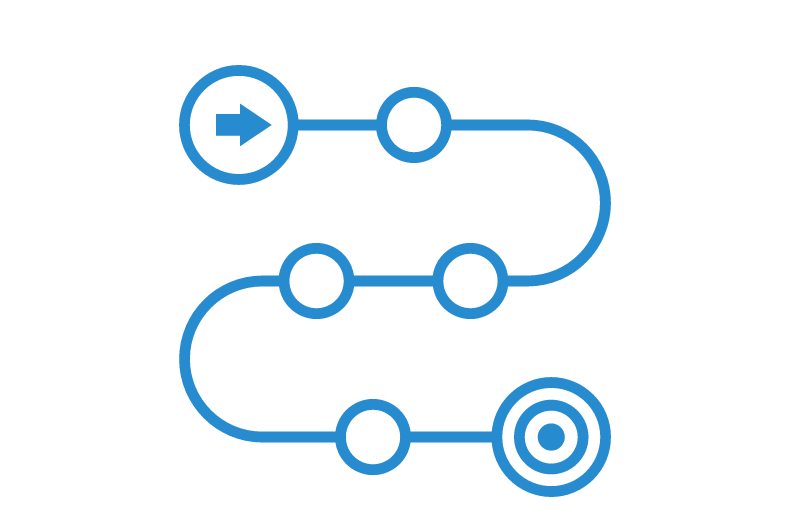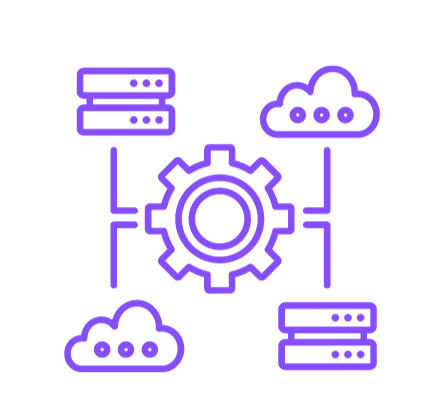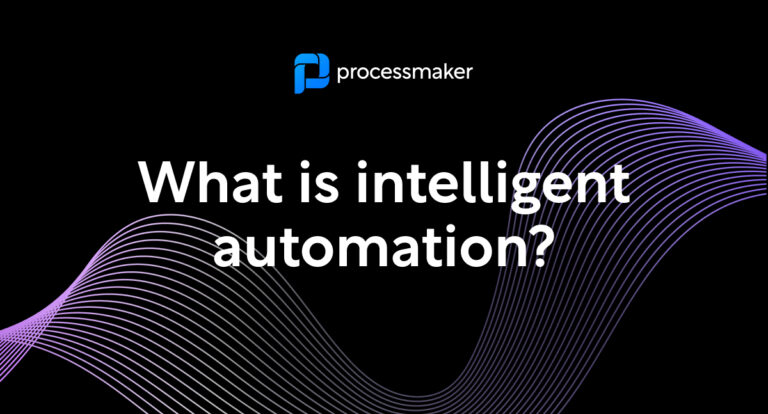En 2024, las organizaciones desarrollarán y lanzarán 8 de cada 10 aplicaciones utilizando tecnologías de bajo código. A la cabeza se encuentra un nuevo escuadrón de empleados sin formación en TI llamados desarrolladores ciudadanos. Gracias a las herramientas de bajo código, los directores de ventas, los profesionales de marketing y los agentes de atención al cliente participan en las iniciativas digitales. Las empresas están realizando inversiones récord en hiperautomatización, aplicaciones fáciles de usar y herramientas de desarrollo de procesos para capacitar a nuevos usuarios y aumentar la eficiencia.
Los Bloques PM son sólo una de las nuevas características de la herramienta de automatización ProcessMaker construida con los desarrolladores ciudadanos en mente. Utilizando los Bloques PM, puede agrupar los pasos clave de automatización de procesos de negocio (BPA) en un elemento reutilizable, de arrastrar y soltar. Según Gartner, 4 de cada 10 empleados ya se están ganando el título de desarrollador ciudadano. Y PM Blocks le facilitará aún más la incorporación de usuarios de bajo código a las filas del desarrollo de procesos.
Consulte nuestra Guía de inicio rápido de Verano 2023 para obtener más información.
¿Qué son los bloques PM de ProcessMaker?
Los Bloques PM invitan a los usuarios de ProcessMaker a guardar un segmento de acciones importantes en un mini sub-proceso. Usted puede tomar este pequeño trozo de proceso y soltarlo en nuevos procesos desarrollados desde cero o con la nueva herramienta de Generación de Procesos AI.
Un bloque PM puede ser una simple secuencia de tareas o una configuración más robusta que implique API y scripts personalizados. Agrupa funcionalidades vitales de automatización inteligente; los procesos incluyen:
- Pagos
- Autorizaciones de los jefes de departamento
- Colección Signature
- Preparación PDF
- Extracción de datos del Tratamiento Inteligente de Documentos (PID)
- Sincronización con un CRM para actualizar la información de los clientes
- Extraer/validar números de factura de un ERP
- Enviar actualizaciones por SMS/mensaje de texto
- Puntos de control "Conozca a su cliente
- Carga de fotos
- Normas de aprobación de préstamos
- Conversión de divisas
- ...¡todo lo que quieras puede convertirse en un Bloque PM fácilmente reutilizable!

Sólo es necesario crear un bloque PM una vez. Una vez hecho esto, los usuarios de low-code pueden reutilizarlo en procesos automatizados similares más adelante.
Cree su primer bloque PM
A continuación se explica cómo empezar con un nuevo bloque PM de ProcessMaker.
- En el Modelador de Procesos, diseñe y configure la función que le gustaría convertir en un Bloque PM "grab-and-go".
- Publique el modelo.
- Vea sus procesos activos.
- Haz clic en la configuración y selecciona "Guardar como bloque PM".
- Rellena los detalles: dale un nombre, una descripción, un icono y un autor. Si es necesario, puedes aplicar la configuración de administrador para que sólo determinados usuarios puedan acceder a tu nuevo Bloque PM. Incluso puedes asignar categorías a tu Bloque PM para facilitar que otros miembros del equipo lo encuentren más tarde.
- ¡Listo! Su nuevo Bloque PM está listo para ser utilizado en futuros flujos de trabajo.
¿Por dónde empezar? Puede encontrar la inspiración en la nueva biblioteca de bloques PM de ProcessMaker, repleta de módulos preconstruidos y listos para usar.
Se acabaron las esperas para soluciones a medida
Los bloques PM permiten a los usuarios crear y compartir funcionalidades complejas que mejoran el rendimiento de los procesos sin grandes esfuerzos de ingeniería. Construir procesos de forma modular le ayuda a ahorrar tiempo en el desarrollo de futuros procesos. También estarás preparado para aprovechar la legión de desarrolladores ciudadanos dispuestos a crear aplicaciones, formularios y funciones de sitios web de gran demanda.
Construir y aprobar una vez, reutilizar indefinidamente
No es necesario reconstruir secciones complicadas y complejas con cada nuevo proceso. Cree un bloque PM una vez y los usuarios de low-code de todo el mundo podrán extraerlo de la biblioteca y colocarlo en nuevos flujos de trabajo.

Estandarizar los pasos vitales del proceso
Los Bloques PM se convierten en un nuevo modelo de funcionamiento de su empresa. Configure las secciones clave según las normas de cumplimiento o las mejores prácticas de su empresa. Cuando haya terminado, bloquéelo para que no se pueda editar. Los usuarios extraen el Bloque PM tal cual, para que pueda asegurarse de que todos los procesos siguen las mismas normas y procedimientos.
Ajustar los modelos y mapas de procesos
En el Diseñador de Procesos, los Bloques PM aparecen como una sola actividad sin importar cuántos eventos, gateways y scripts realicen el trabajo. Esto limpia la interfaz de usuario ocultando el funcionamiento interno detallado o el modelado de procesos de negocio a los usuarios menos experimentados.
Editar bloques PM individualmente
No es necesario abrir todo un proceso para ajustar un Bloque PM. Utilice el Editor de bloques PM para centrarse exclusivamente en el segmento que necesita perfeccionar.
¿Por qué el futuro es de código bajo?
Los puntos de datos IoT y la IA llevan a todo el mundo -incluso a las industrias tradicionalmente analógicas- al ruedo del software.
Pensemos en los artículos deportivos: un sector que prospera casi exclusivamente fuera de Internet. La adquisición por Nike de una startup de visión por ordenador puede confundir a los curiosos, pero la empresa de calzado pretende utilizar esta tecnología para analizar los pies de los compradores y sugerirles los modelos que mejor se ajustan a sus pies.

La explosión de las necesidades de tecnología de automatización se está extendiendo a todo tipo de empresas, y pocas organizaciones disponen de los recursos necesarios para satisfacer la demanda.
Desde el calentador de tazas con Bluetooth que te compraste en la última conferencia hasta el sutil broche Humane Ai de la Semana de la Moda de París, hasta los espacios más insospechados vibran ahora con sensores conectados a Internet. Las organizaciones necesitarán más aplicaciones, procesos e integraciones de software que nunca para utilizar la moderna avalancha de datos.
Todo el mundo recurre a la tecnología: tanto si se trata de una plataforma SaaS como de un proveedor sanitario, las necesidades de software son similares. Pero casi el 40 % de las organizaciones tienen dificultades para encontrar personal suficiente para cumplir sus ambiciones de transformación digital.
Las herramientas de bajo código, manejadas por desarrolladores ciudadanos, están ayudando a todas las organizaciones a dar mayores golpes a sus iniciativas estratégicas a corto y largo plazo.
¿Cómo generan hiperproductividad los bloques PM?
El objetivo último de los Bloques PM es hacer que el flujo de trabajo sea más fluido y sencillo. En pocas palabras, reutilizar los PM Blocks, en lugar de crear procesos totalmente desde cero, significa dedicar menos tiempo a la construcción y más tiempo a lo que realmente importa. En lugar de empezar de nuevo, aprovecha todo el potencial de la tecnología de automatización. Recuerde: trabaje de forma más inteligente, no más dura.
¿Listo para construir tu primer bloque PM?
Con los Bloques PM, puede extender la automatización de procesos a más miembros del equipo. Tanto si se trata de un programador experto como de un desarrollador ciudadano, todo el mundo puede beneficiarse de los Bloques PM listos para usar. Los profesionales de TI pueden crear subprocesos complejos una vez y luego centrarse en proyectos que requieran su experiencia.
Los usuarios empresariales pueden utilizar funcionalidades aprobadas por TI y ajustadas a sus necesidades de proceso. Los Bloques PM son una ventaja para las organizaciones que buscan reforzar su conjunto de herramientas de bajo código. ¡Pruebe a crear su primer bloque hoy mismo! Chatee con nuestro equipo de expertos para desbloquear la hiperproductividad en su organización.






